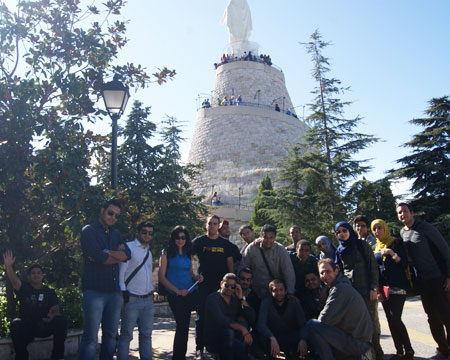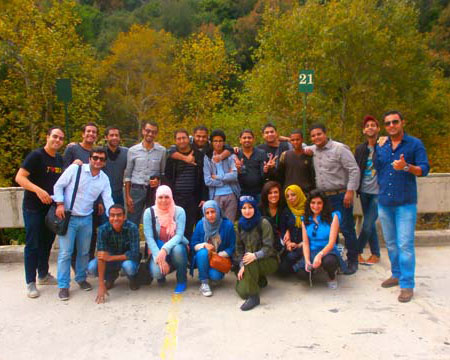- English
- عربي
News & Events
A Field trip to Discover Lebanon - Jeita Grotto and Harissa
2235 Kilometers away from my city Sanaa, I dreamed of visiting the pearl of Lebanese tourism which I consider one of the most marvelous wonders of the East; an amazing treasure of natural history in both of its levels; the lower water cave and the upper dry cave: Jeita Grotto. That dream came true through my participation in the Leaders for Democracy Fellowship Arabic Program. The program was set up by the Lebanese American University and a collaborative group of more than eleven Arab states from Morocco to the furthest point of the Asian Arab East. Twenty two young men and women represented the group. It was our first Discover Lebanon field trip and included a visit to the pearl of the East - Jeita Grotto. We set out to visit the lower cave in small boats and reached a depth of approximately 500 meters out of a total 6200 meters. We entered the upper cave via pathways prepared for walkers in keeping with the nature of the cave. From there one could contemplate the captivating natural carvings at a depth of 720 meters out of a total 2200 meters. As a group visiting the cave, our information was based on a documentary film we saw in one of the rooms. The film explained how the strange carvings were formed in the heart of the mountain as well as the name and date of each one. It also helped us understand the mysteries and components of the most beautiful cave in the world. Signs that we had sensed the might of nature filled our faces as the reverent beauty sank in. That was clear when we left after our first Discover Lebanon visit. For our second visit, we headed for the hill of Harissa. When we arrived the words written on the road caught my attention:
“Save Lebanon from the hands of the oppressive enemies
Always preserve the cedar; it contains the purity of hermits
The people of Lebanon are calling, so hear the sound of the cry”


I had many questions as to what might be behind those words. I asked about them and was told that since 1908 Lebanon’s churches have held formal celebrations for the Lady of Lebanon on the first Sunday in March each year. That was the day when the statue of the Virgin Mary was erected above a new shrine on the hill of Harissa, after that the words were written. Then I understood the beautiful significance of those expressive words. From afar, behind the walls of the hill, the statue of the Virgin Mary stood on high. The rest of the group and I were eager to get close to the statue and take commemorative pictures to document our visit to that historic sculpture. When we were close to the statue, I looked closely at the visitors who had come from various countries. There were people from Lebanon, Syria, Jordan and Egypt, as well as European, American and other countries. The sanctuary of the Lady of Lebanon, the Virgin Mary is a speaking sign of the worship of Mary which has become engrained in the area over history. From its place on the top of the mountain, it expresses an eternal national and religious tradition for the visitors.
By: Thekra Ahmad Saleh Al Sabahi - Yemen
